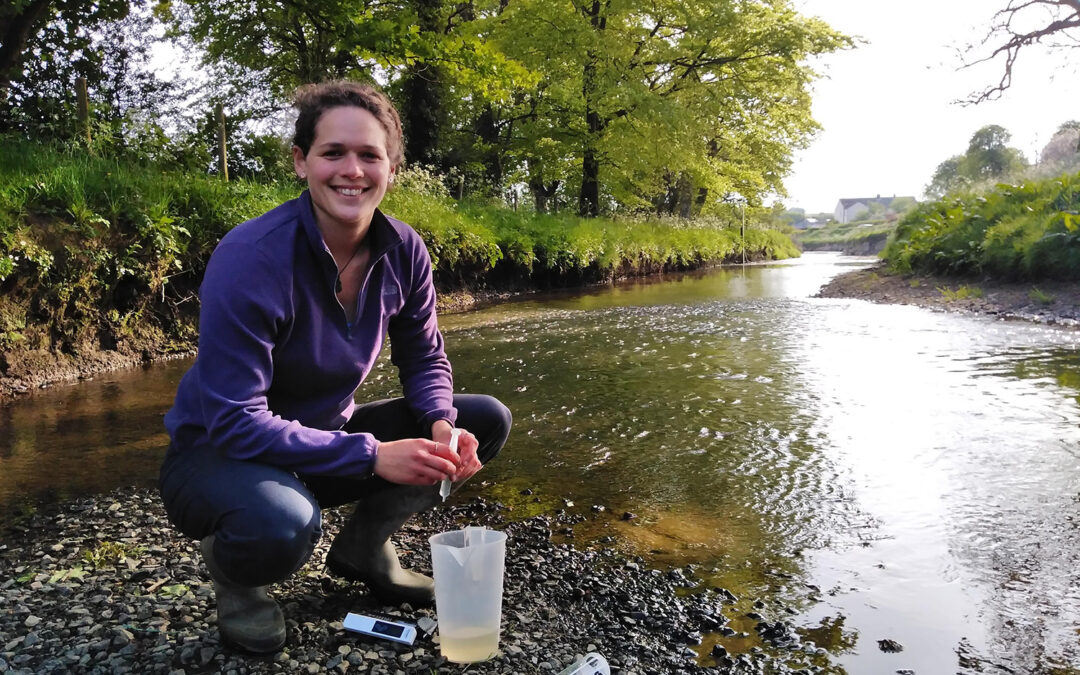By Lydia Deacon – Junior Evidence & Engagement Officer at Westcountry Rivers Trust
COASTAL streams are predominant features within each of Cornwall AONB’s areas and contribute to the coastline’s well-known beauty, draining into picturesque fishing villages and lovely beaches.
Many of them are small catchments draining from the inland hills. Although they may not have the prominence and visual impact of our large rivers and estuaries they can be just as important as a home to an array of wildlife and plants that rely on them for their survival.
Not only are they important for biodiversity but I have often seen the streams just as busy as the beaches with people paddling and children playing in the summer.
Unfortunately, the picturesque streams are not always at full health, being effected by issues such as unfavourable farming practices, blocked sewage drains and grey water misconnections, all of which can severely degrade the water quality resulting in reduction in biodiversity and unsuitable water quality for paddling and playing in.
But how do we know how healthy our streams are? We could seek out their Water Framework Directive (WFD) status, giving us an overview of chemical and ecological health.
However, what you may well find is the coastal streams are no longer classified, and, in some cases, there is severely reduced statutory monitoring of water quality.
I have found this to be the case for many of the streams that run out to sea surrounding my hometown of Bude, which is certainly no exception among the coastal towns.
Westcountry Citizen Science Investigation (CSI) has been running for four years and there are now 130 volunteers that sample waterways across the South West, including the coastal streams within Cornwall AONB and beyond.
In fact, there are several areas in which our citizen scientists have been sampling consistently for many years, resulting in excellent data from which we can determine the health and quality of the streams.
Diedre and Alan, for example, has been surveying in the Hartland AONB, while a group of citizen scientists’ sample around Crackington Haven. The streams they survey run through picturesque wooded valleys before popping out on the coast, often unnoticed.
Keeping a steady eye on the chemical and ecological health of these hidden waterways provides a baseline to spot changes ensuring that wildlife continues to thrive.
Down in the Central South Coast AONB area, Nick and Rob have been sampling for more than three years.
Mining and sewage affect their local streams; Nick has had to report to the Environment Agency on several occasions due to the presence of sewage fungus, a micro-organism which grows because of organic pollution.
Their efforts in consistently sampling and keeping a watchful eye on their streams and rivers ensure that issues do not go unreported and we are also able to highlight areas that need improvement.
The numbers of CSI river keepers within coastal communities is ever growing, which is fantastic to see.
We recently ran CSI training sessions for groups in Newquay, Rame and Falmouth. I believe the more people that are aware of the issues affecting their local streams and rivers the better as we all have a part to play in ensuring clean and ecologically rich water environments.
Whether that be through saving water, collecting rainwater, not putting the wrong thing down the drain or loo, or simply keeping a watchful eye on your local watercourse, it all contributes to creating cleaner and healthier waterways.
To become a River Keeper on your local stream or water course please email [email protected] or visit wrt.org.uk/project/become-a-citizen-scientist/ for more information.
Thanks to Cornwall Area of Outstanding Natural Beauty for including Lydia’s article in their environment column in the West Briton, Cornish Guardian and Cornishman on 27/28 May 2020.

